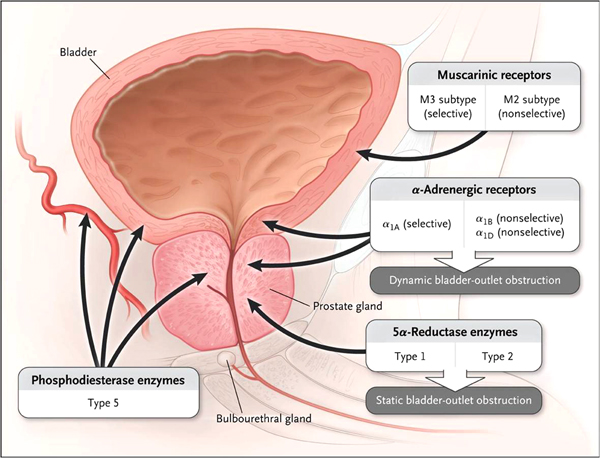Dr. Ajay Anand
Any man over the age of 40 years can have urinary problems. BPH is a condition where either the muscular or the glandular part of prostate gland starts to produce obstructive and/or irritative symptoms. If you think you are having urinary complains like decrease in stream of urine, sense of incomplete emptying of bladder, inability to control urine flow, feeling the need to urinate frequently, waking up to urinate at night and blood in the urine; you should see your physician or preferably an Urologist immediately.
Your physician will examine you clinically and also may advise you to go for blood, urine, USG of KUB and prostate region and uroflowmetry and serum PSA for diagnosis. Sonography will also help detect any significant changes in bladder, prostate glands and post urination the amount of urine retained (Post Void Residue). The most important examination is the Digital rectal exam.
BPH is a serious but a slow progressive disease and urinary complaints may or may not be perceptible. If it is timely intervened then patient can be treated and managed conservatively with the use of effective medications, but delay can lead to surgical intervention. The delay of BPH diagnosis can also lead to more serious medical conditions like bladder stones, complicated urinary tract infection, bladder or kidney damage.
BPH can be well treated with medical managementprovided it is detected and managed at the correct time. The first and foremost step is to attend to the symptoms that appear. For example, a patient who walks into a general clinic with complains of painful urination can be a possible case of BPH but can also be suffering from UTI. The further step is to check patient’s progress on medical management, if somebody does not respond to medical management or deteriorates on treatment or goes into urinary retention then he would need the next step of surgical management. There are different types of medical management protocols for different patients of BPH. Urologist on basis of patient’s symptoms and investigative protocol decide about type of medication to be prescribed for an individual patient. Patients on medical treatment need to have strict compliance with treatment and regular follow-up with his treating urologist.Surgery is a one-time curative option but whether patient needs surgery or can be treated medically can be decided by urologist by careful symptom and investigative examination of patient.
Nowadays, there are several minimally invasive techniques which are equally effective will less morbidities when patient selections are appropriate. The minimally invasive procedures are Transurethral resection of the prostate(TURP) which is the Gold standard and others are Transurethral Vaporresection of the prostate TUVRP, HoLEP (Holmium Laser enucleation of the Prostate), Transurethral microwave therapy(TUMT), Prostatic stents etc. In most of these treatments, modalities essentially the adenomatous portion (obstructive portion) of the gland is removed.
Figure – TURP in progress
With available instruments and surgical expertise, prostate of even more than 100 grams can also be removed endoscopically. TUVRP is one such technique in which a special elctrode loop is used which causes simultaneous resection and vaporisation of the prostate. With this technique, prostates even upto 376 grams have been removed endoscopically.
Bipolar TURP and Laser prostatectomy are another minimal invasive treatment options. These are preferred in cases with cardiac problems, patients with cardiac pacemakers and laser proatacetomy owing to its advantage of minimal bleding is preferred in patients on oral anticoagulants.Laser prostatectomy is costly owing to cost of equipment and laser fibre. Threr are various types of lasers available – Holmium, KTP, Biolitec etc. Different types of lasers can be used for ablation, enucleation or resection of prostate, depending upon type of laser and power of laser used. 100 watt Holmium laser is available in our hospital which can be used for laser prostatectomy besides use of laser in lithotripsy. A study on laser prostatectomy by author is published in Indian Journal of Urology. Another study by author showing comparison between TURP, TUVRP and HoLEP is published in Curr Opin Urol.
All in all, early intervention with available effective medical management prevents many long-term complications and in certain situations surgical intervention can be avoided. However it is only urologist on basis of individual patient’s symptoms and investigations decide about best treatment option for patient. With available minimal invasive endoscopic surgical treatment options, prostate of even bigger sizes can be treated endoscopically and pateint can be discharged in a day or two after surgery.
(The author is presently working as Consultant in GMC, Jammu)
Trending Now
E-Paper


